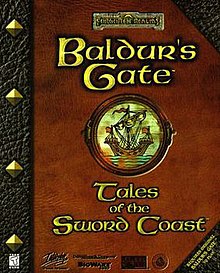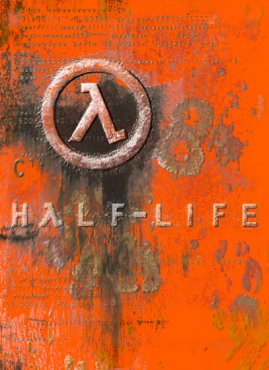
Half-Life is a 1998 first-person shooter (FPS) game developed by Valve Corporation and published by Sierra Studios for Windows. It was Valve's debut product and the first game in the Half-Life series. The player assumes the role of Gordon Freeman, a scientist who must escape the Black Mesa Research Facility after it is invaded by aliens following a disastrous scientific experiment. The gameplay consists of combat, exploration and puzzles.

Baldur's Gate is a series of role-playing video games set in the Forgotten Realms Dungeons & Dragons campaign setting. The series has been divided into two sub-series, known as the Bhaalspawn Saga and the Dark Alliance, both taking place mostly within the Western Heartlands, but the Bhaalspawn Saga extends to Amn and Tethyr. The Dark Alliance series was released for consoles and was critically and commercially successful. The Bhaalspawn Saga was critically acclaimed for using pausable realtime gameplay, which is credited with revitalizing the computer role-playing game (CRPG) genre.
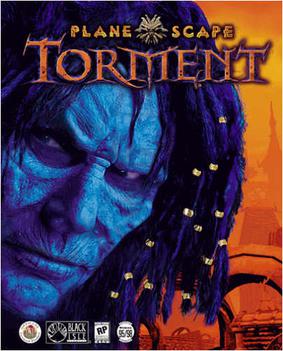
Planescape: Torment is a 1999 role-playing video game developed by Black Isle Studios and published by Interplay Entertainment for Windows. The game takes place in locations from the multiverse of Planescape, a Dungeons & Dragons (D&D) fantasy campaign setting. The game's engine is a modified version of the Infinity Engine, which was used for BioWare's Baldur's Gate, a previous D&D game set in the Forgotten Realms.

Interplay Entertainment Corp. is an American video game developer and publisher based in Los Angeles. The company was founded in 1983 as Interplay Productions by developers Brian Fargo, Jay Patel, Troy Worrell, and Rebecca Heineman, as well as investor Chris Wells. As a developer, Interplay is best known as the creator of the Fallout series and as a publisher for the Baldur's Gate and Descent series.

Icewind Dale is a role-playing video game developed by Black Isle Studios and originally published by Interplay Entertainment for Windows in 2000 and by MacPlay for the Macintosh in 2002. The game takes place in the Dungeons & Dragons Forgotten Realms campaign setting and the region of Icewind Dale, and uses the 2nd edition ruleset. The story follows a different set of events than those of R. A. Salvatore's The Icewind Dale Trilogy novels: in the game, an adventuring party becomes enlisted as a caravan guard while in Icewind Dale, in the wake of strange events, and eventually discover a plot that threatens the Ten Towns of Icewind Dale and beyond.

Black Isle Studios is a division of the developer and publisher Interplay Entertainment that develops role-playing video games. It has published several games from other developers.

Darkstone: Evil Reigns is an action role-playing video game developed by Delphine Software International for Microsoft Windows and PlayStation. In 2014, the French publisher Anuman Interactive launched a remake available on iPad, iPhone and Android, with the cooperation of the original game's author Paul Cuisset.

Fallout 2: A Post Nuclear Role Playing Game is a 1998 role-playing video game developed by Black Isle Studios and published by Interplay Productions. It is a sequel to Fallout (1997), featuring similar graphics and game mechanics. The game's story takes place in 2241, 80 years after the events of Fallout and 164 years after the atomic war which reduced the vast majority of the world to a nuclear wasteland. The player assumes the role of The Chosen One, the grandchild of the first game's protagonist, and undertakes a quest to save their small village on the West Coast of the United States.
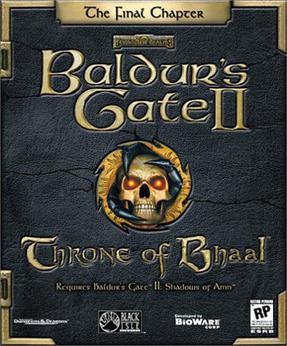
Baldur's Gate II: Throne of Bhaal is a 2001 expansion pack for the role-playing video game Baldur's Gate II: Shadows of Amn. It adds a multi-level dungeon called Watcher's Keep to the game and completes the main plot. There are several new weapons, a higher level cap, a further refined Infinity graphics engine, and new class-related features and magical skills. The novelization of the game was written by Drew Karpyshyn and released in September 2001.

Baldur's Gate II: Shadows of Amn is a role-playing video game developed by BioWare and published by Interplay Entertainment. It is the sequel to Baldur's Gate (1998) and was released for Microsoft Windows in September 2000. Like Baldur's Gate, the game takes place in the Forgotten Realms—a fantasy campaign setting—and is based on the Advanced Dungeons & Dragons 2nd edition rules. Powered by BioWare's Infinity Engine, Baldur's Gate II uses an isometric perspective and pausable real-time gameplay. The player controls a party of up to six characters, one of whom is the player-created protagonist, while the others are certain characters recruited from the game world.

Minsc is a fictional character in the Baldur's Gate series of Dungeons & Dragons role-playing video games developed by BioWare. He originated from the pen-and-paper Dungeons & Dragons sessions held by the lead designer of Baldur's Gate, James Ohlen, and was expanded upon by the game's lead writer, Lukas Kristjanson. His video game debut was in Baldur's Gate as a companion character who can join the player's party. He also appears in the sequel, Baldur's Gate II: Shadows of Amn, the expansion, Baldur's Gate II: Throne of Bhaal, the 2015 game Baldur's Gate: Siege of Dragonspear, the 2023 game Baldur's Gate 3, as well as in promotions relating to the titles. Minsc is voiced by Jim Cummings in his original video game appearances, and by Matt Mercer in Baldur's Gate 3.
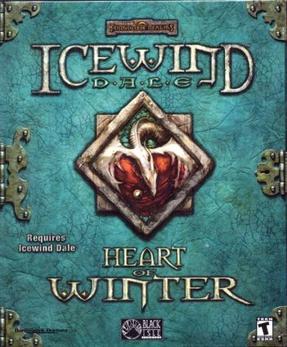
Icewind Dale: Heart of Winter is a 2001 expansion pack to the role-playing video game Icewind Dale, developed by Black Isle Studios and published by Interplay Entertainment. It introduced many changes and additions to the original game, and included a new campaign. A downloadable add-on to this expansion pack, titled Trials of the Luremaster, was released for free. Both the expansion and add-on were included in Icewind Dale: Enhanced Edition.

Return to Krondor is a role-playing video game set in Raymond Feist's fictional fantasy setting of Midkemia. A sequel to 1993's Betrayal at Krondor, it was released for Windows on the PC in time for the 1998 Thanksgiving and Christmas season. Within the game, the player commands a group of heroes with different attributes, strengths, and weaknesses which the player may upgrade over the course of the game.

Pool of Radiance: Ruins of Myth Drannor is a Forgotten Realms Dungeons & Dragons role-playing video game released in 2001 by Ubi Soft. It is the fifth and latest game in the Pool of Radiance series.

Baldur's Gate is a role-playing video game that was developed by BioWare and published in 1998 by Interplay Entertainment. It is the first game in the Baldur's Gate series and takes place in the Forgotten Realms, a high fantasy campaign setting, using a modified version of the Advanced Dungeons & Dragons (AD&D) 2nd edition rules. It was the first game to use the Infinity Engine for its graphics, with Interplay using the engine for other Forgotten Realms-licensed games, including the Icewind Dale series and Planescape: Torment. The game's story focuses on a player-made character who travels across the Sword Coast alongside a party of companions.
James Ohlen is a video game designer. He was Senior Creative Director of BioWare where he worked for 22 years prior to starting the publishing company Arcanum Worlds in 2018. In 2019, Ohlen became the lead of a new internal development studio Archetype Entertainment under Wizards of the Coast to develop new intellectual property and video games for the company.
Baldur's Gate: Enhanced Edition is a remaster of the 1998 role-playing video game Baldur's Gate, developed by Overhaul Games, a division of Beamdog, and published by Atari. It was released for Microsoft Windows on November 28, 2012, with additional releases between 2012 and 2014 for iPad, OS X, Android and Linux and most recently for Xbox One, PlayStation 4, and Nintendo Switch on October 15, 2019. The remaster combines the original game, Baldur's Gate, with its expansion Baldur's Gate: Tales of the Sword Coast, retaining the original elements from both, while including additions, a separate arena adventure entitled The Black Pits, and a number of improvements some of which were imported from Baldur's Gate II: Shadows of Amn.

Baldur's Gate: Siege of Dragonspear is an expansion pack for the role-playing video game Baldur's Gate: Enhanced Edition developed and published by Beamdog. The expansion is the first new original content to the Baldur's Gate series released after more than 10 years, and its plot takes place between the events of Baldur's Gate and Baldur's Gate II: Shadows of Amn. Gameplay remained similar to Baldur's Gate: Enhanced Edition, although a class, companions and areas have been added. Siege of Dragonspear received mixed to positive reviews by video game publications who appreciated the return to the franchise after a long hiatus. It received backlash from some consumers who criticized the general quality of the writing and the introduction of a transgender non-playable character.

Baldur's Gate 3 is a 2023 role-playing video game developed and published by Belgian game developer Larian Studios. The game is the third main installment in the Baldur's Gate series, based on the tabletop fantasy role-playing system of Dungeons & Dragons. A partial version of the game was released in early access format for macOS and Windows in October 2020. It remained in early access until its full release for Windows in August 2023, with versions for PlayStation 5, macOS, and Xbox Series X/S releasing later that year.
